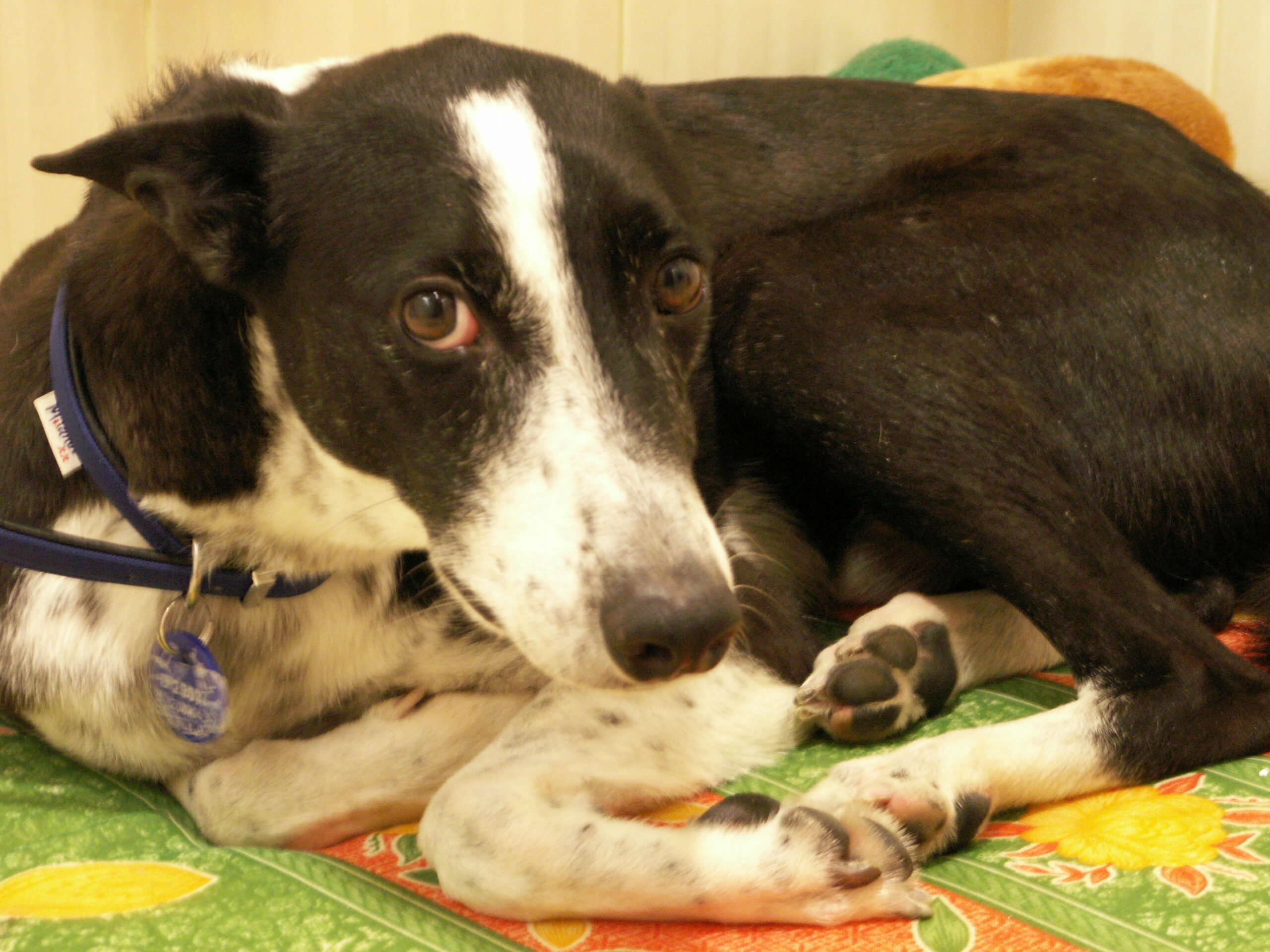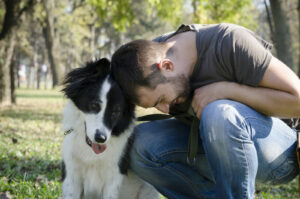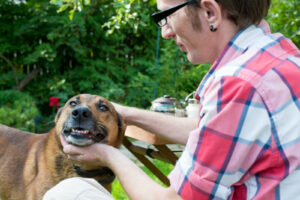Barks Blog
Body Language – Your Dog’s Native Tongue
By Susan Claire, CPDT-KA

If you own a dog, then you teach English as a second language. A dog’s native tongue is body language. Yet, dogs adapt and learn our English words with remarkable ability. There are many emotions that we share with our canine friends, and some that we project onto them. It’s in our best interest to learn about how our dogs really think and feel and learn. If you insist your dog learn your language, then it’s only fair you make the effort to learn his. This will facilitate mutual understanding and communication.
The Myths of Spite and Guilt
Humans love to attribute these two motives to dogs. In reality, dogs experience neither guilt nor spite. When returning from a hard day’s work, you might get annoyed walking into a foul-smelling house and finding a cold pile on the floor. Perhaps you yell at the dog and punish him by rubbing his nose in it. Or maybe you’re more evolved than that, and just scowl, sigh, and complain loudly as you clean it up. Either way, your dog knows you are angry and it’s scaring him. He has no idea why, however, because he had that potty accident hours ago. And he did it simply because he had to go and no one was there to let him out. That’s it- no ulterior motive. How very silly to imagine dogs would use their urine and feces to make a point, or “spite” us. Really, what species does that? Oh, that’s right, primates do.. ( ever been to the zoo?) Luckily for us, dogs are not spiteful, as they’d have all day to plan their revenge- and I imagine it would be far worse than a little potty accident on the floor!
Thankfully, canines are far more innocuous than that. Dogs make connections between actions and immediate consequences. So when you walk through the door and act out in anger, your dog learns that you are scary and unpredictable when you come through the door. If this happens often enough, you will start to come home and see your dog crouching, slinking, ears back, hesitant to approach and you will mistakenly read his fearful, deferential body language as guilt. He is displaying this body language not because he “knows he did something wrong” but because he’s made the association between your entry and your tirades. He simply cannot put the potty accident together with your displeasure unless you interrupt him in the act. In this situation, the use of a crate or a pet sitter will work wonders for improving your relationship.
Come Closer/Go Away!


Dogs, like humans, have personal space. They clearly invite others into, or request them out of, their personal space. Canines are usually adept at reading and heeding those signals; humans, not so much. A wagging tail does not tell the whole story. A big, loopy wagging tail on a wiggling body with a relaxed face and open mouth indicates a happy dog. A tightly wagging tail on a stiff body, with a closed mouth and large eyes is a warning to back off. Putting the wagging tail into context with the other body signals gives a clearer picture of the dog’s emotional state.
You may encounter a dog who doesn’t particularly like or trust people and I’m sure he has his reasons. But you don’t want to be the one to pay the price. Dogs have teeth and they know how to use them. Fortunately, they give lots of warning before they take such drastic measures. Rarely do they “attack out of nowhere,” as some primates have claimed. Experts agree that 90% of aggression comes from fear. This applies to aggression toward either species. So, understanding when a dog is scared gives us time to remove our dogs or ourselves from the situation before it escalates.
You may think, “dogs love me,” but don’t push the issue with a dog who is backing away, tail down, ears flat, wide eyes with the whites showing , tense facial muscles pulled into a grimace- these are all indications of intense fear. This dog is telling you in the only way he knows how he is not comfortable, and needs space. Ignoring these signals can lead to a dog feeling trapped or threatened. And that’s what their teeth are for.
Some dogs love people, but have a bone to pick with members of their own species. A stiff, still, forward-leaning body, a hard stare and a closed mouth is a dead giveaway that the canine in question is focusing on something he is not comfortable with. Two dogs face-to-face in this posture almost always escalate to aggression. If your dog is in this posture, and on a leash, your body language will inform his, so don’t tense up or speak frantically. Disengage him by calmly asking him to do something else like “watch me,” or “let’s go,” and then praising him and quickly walking away.
A friendly, well-socialized dog welcomes interaction. A typical canine will signal with his body that he can’t wait to meet you. An approach that says “pet me please” looks like this: soft relaxed eyes, open panting mouth, a body that curves toward the object of social interest. Touching, leaning, eye contact, even jumping up, says,” look at me, touch me, play with me!” What dog lover can resist that kind of invitation? But here’s where we sometimes get carried away. Humans, being primates, want to hug, squeeze and kiss the object of our affection. When we do this, it gives us great pleasure. But if we could see our dogs objectively, we would know from their body language that these same actions make them very uncomfortable. A dog might let you know this by turning his head and eyes away from you, and flicking his tongue in and out of his closed mouth. He might yawn or sniff the floor, or do the shake off. These signals indicate mild stress or discomfort and are sometimes referred to as “calming signals,” as your human expressions of affection seem a bit forward and rude to him. Most of us do it anyway and our own dogs seem to know it’s love, but instinctively, it still intimidates them. So, lighten up! Throw your dog a ball, give him a quick massage, get down on the floor and invite him to play by doing a play bow! Now you’re speaking his language!
For more on dogs saying yes or no, see The Art and Science of Consent Testing, BARKS from the Guild, July 2015, pp. 52-53.
About the Author
Susan Claire CPDT-KA is the owner of PlayTrain Positive Dog Training, Inc., in Broward County Florida. Susan has volunteered at the Humane Society of Broward County since 1999, and has participated in and helped develop a variety of behavior-based programs there.

